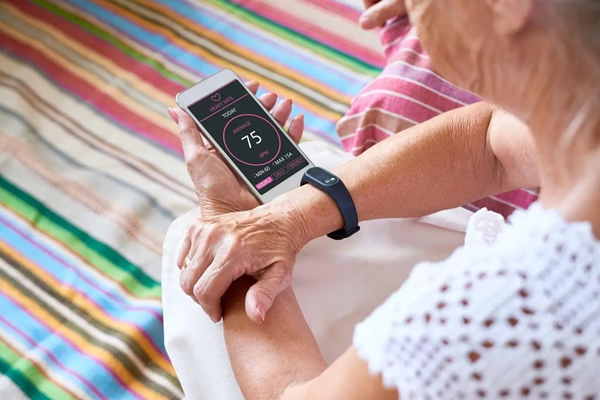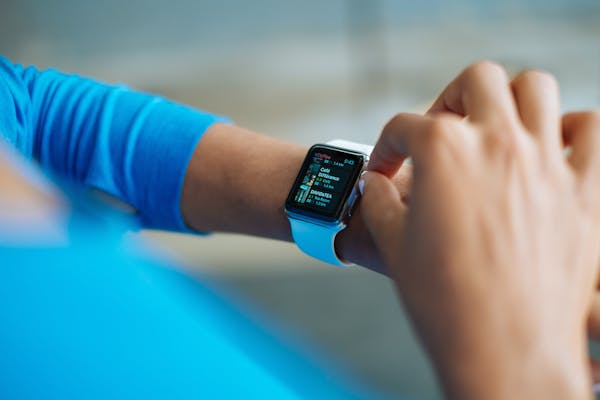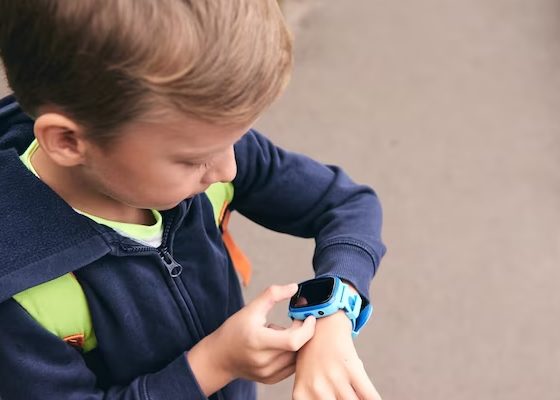
In particular, wearable technology tailored for seniors has emerged as a promising solution to address various challenges associated with aging, such as healthcare monitoring, safety concerns, and social connectivity. This introduction explores the landscape of wearable technology for seniors, highlighting its benefits, applications, and the evolving role it plays in empowering older adults to lead healthier, more independent lives. As technology continues to advance at an unprecedented pace, its integration into various facets of daily life has become increasingly ubiquitous. One of the most intriguing areas of technological innovation is wearable technology, which has garnered significant attention for its potential to enhance the quality of life for individuals across all age groups.
List of Wearable Technology for Seniors:
Wearable technology for seniors has become increasingly popular as it offers numerous benefits including health monitoring, safety features, and improved communication. Here are some examples:
-
Smartwatches:

Image from Pexels Smartwatches have emerged as a significant component of wearable technology for seniors, offering a range of features designed to enhance their daily lives. These devices typically come equipped with health monitoring capabilities, such as heart rate tracking, step counting, and even fall detection, providing seniors with valuable insights into their well-being and allowing them to maintain a proactive approach to their health.
Additionally, smartwatches often incorporate features like medication reminders, calendar alerts, and GPS tracking, which can help seniors stay organized and connected with their loved ones. With user-friendly interfaces and customizable settings, these devices cater to the specific needs and preferences of older adults, empowering them to lead more independent and active lifestyles. Wearable technology for seniors, exemplified by smartwatches, represents a promising avenue for improving quality of life and promoting healthy aging.
-
Health Trackers:
Health trackers are an important component of wearable technology for seniors, offering a range of features tailored to enhance their well-being and quality of life. These devices, equipped with sensors and monitoring capabilities, enable seniors to track various health metrics such as heart rate, activity levels, sleep patterns, and even blood pressure.
By providing real-time data and insights, wearable health trackers empower seniors to take proactive measures towards maintaining their health and fitness goals, while also facilitating better communication with healthcare providers. Additionally, many of these devices incorporate user-friendly interfaces and intuitive designs to cater to the specific needs and preferences of older adults, promoting ease of use and adoption. Through continuous monitoring and personalized feedback, wearable technology for seniors, exemplified by health trackers, serves as an indispensable tool in promoting active aging and overall well-being.
-
GPS Trackers:
Wearable technology for seniors encompasses a range of innovative devices designed to enhance safety, health monitoring, and independence among older adults. GPS trackers stand out as particularly valuable tools within this category. These compact and lightweight devices utilize global positioning system technology to accurately track the location of seniors, providing peace of mind to caregivers and loved ones while allowing seniors to maintain their autonomy.
With features such as real-time location updates, geofencing capabilities, and emergency alerts, GPS trackers offer invaluable support in scenarios where seniors may wander or experience medical emergencies. They empower seniors to venture outdoors confidently while ensuring swift assistance in case of emergencies, thus fostering greater independence and security in their daily lives.
-
Medical Alert Systems:
Medical Alert Systems are a crucial component of Wearable Technology for Seniors, providing a lifeline for older adults in case of emergencies. These systems typically consist of a wearable device equipped with a panic button that, when activated, connects the user to a 24/7 monitoring center. The device may also feature fall detection capabilities, automatically alerting emergency services if a fall is detected and the user is unresponsive. Additionally, some advanced systems integrate GPS tracking, enabling caregivers or emergency responders to locate the wearer quickly.
-
Smart Shoes:
-
Smart Clothing:
Smart clothing is a form of wearable technology for seniors that integrates electronic components and sensors into garments to monitor various aspects of health and well-being. These garments can track vital signs such as heart rate, body temperature, and activity levels, providing real-time data to users and caregivers. Additionally, smart clothing can incorporate fall detection systems, alerting emergency services or caregivers in case of a fall or sudden health issue.
-
Smart Glasses:

Image from Unsplash Smart Glasses, a prominent facet of wearable technology for seniors, encompass a range of advanced features designed to enhance daily living and address age-related challenges. These glasses integrate augmented reality (AR) displays, allowing seniors to access information hands-free, such as reminders, medication schedules, and navigation assistance, thus promoting independence and safety.
Moreover, they facilitate communication by offering real-time translation services and video calls, fostering social connectivity and reducing feelings of isolation. Equipped with sensors, smart glasses can also monitor health metrics like heart rate and activity levels, providing valuable insights into wellness and enabling proactive healthcare management.
-
Smart Hearing Aids:
Smart hearing aids represent a groundbreaking advancement in wearable technology for seniors, addressing age-related hearing loss with innovative features. These devices leverage cutting-edge technology such as artificial intelligence, machine learning algorithms, and Bluetooth connectivity to enhance the auditory experience of seniors.
Through advanced signal processing, smart hearing aids can distinguish between different sounds, amplify speech while suppressing background noise, and adapt to various listening environments in real time. Additionally, many smart hearing aids offer personalized adjustments via smartphone apps, allowing users to customize settings according to their preferences and monitor their hearing health.
Conclusion:
When selecting wearable technology for seniors, it’s essential to consider factors such as ease of use, comfort, reliability, and compatibility with existing devices or systems. Additionally, involving seniors in the decision-making process and ensuring proper training and support can help maximize the benefits of these technologies.


